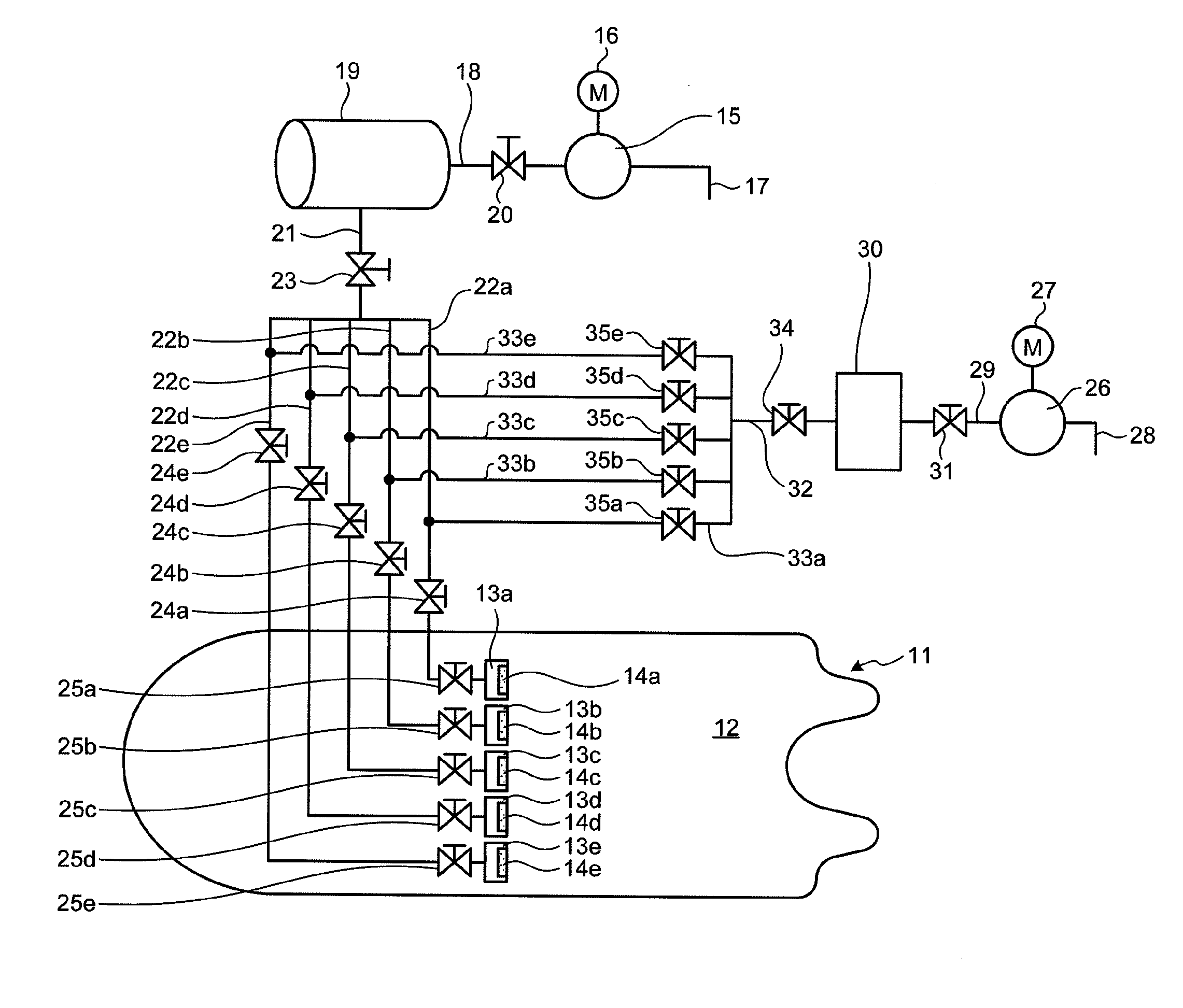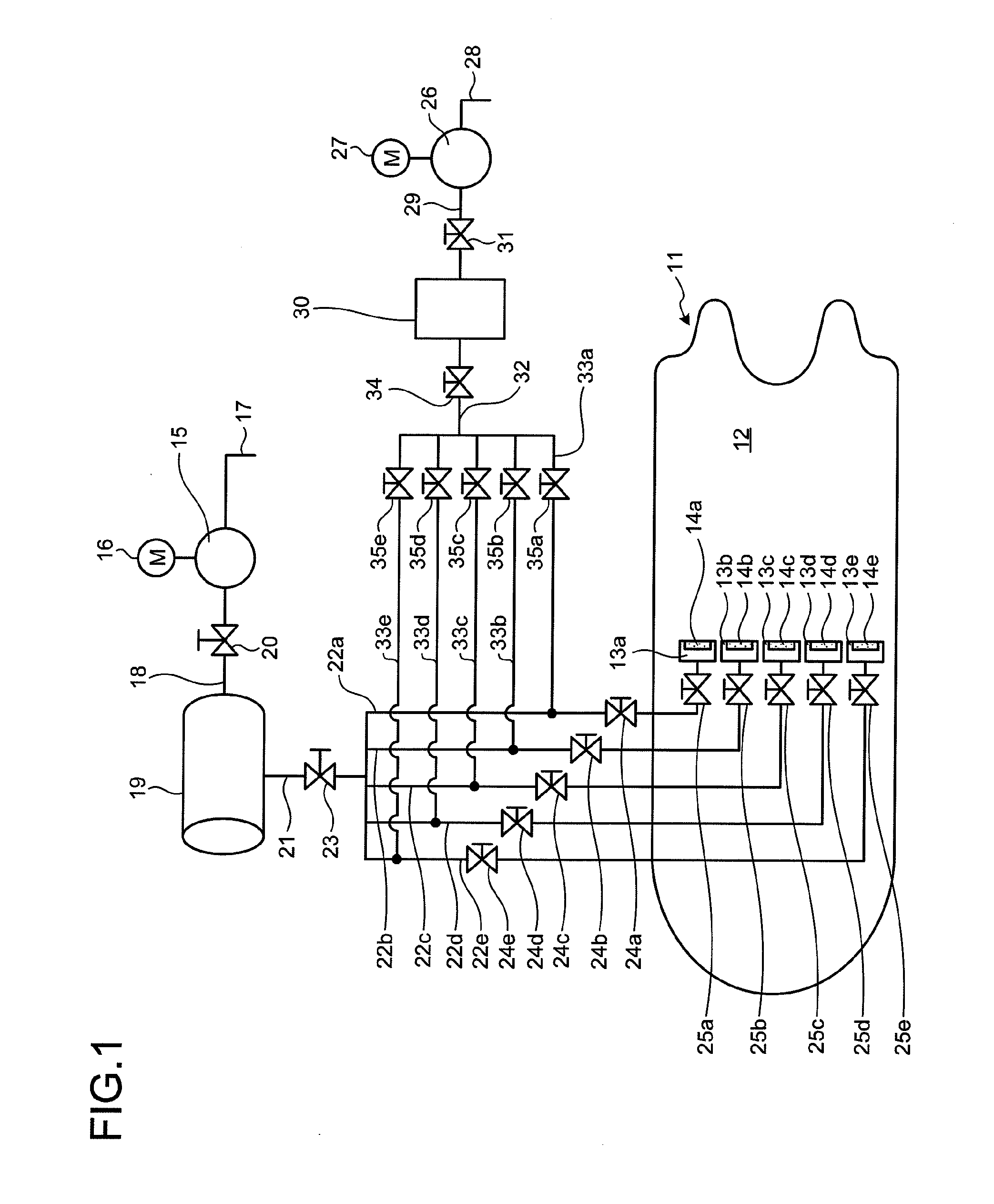Device for reducing frictional resistance of ship body
- Summary
- Abstract
- Description
- Claims
- Application Information
AI Technical Summary
Benefits of technology
Problems solved by technology
Method used
Image
Examples
first embodiment
[0041]FIG. 1 is a schematic configuration diagram of a ship-body frictional resistance reducing device according to a first embodiment of the present invention.
[0042]In the ship-body frictional resistance reducing device according to the first embodiment, as shown in FIG. 1, a plurality of ejection chambers 13a, 13b, 13c, 13d, and 13e (five ejection chambers in the present embodiment) are arranged in a sequential arrangement on a bottom 12 of a ship body 11 of a ship along a width direction of the ship body 11. On lower surfaces of the ejection chambers 13a, 13b, 13c, 13d, and 13e, a plurality of air ejection holes 14a, 14b, 14c, 14d, and 14e are formed, respectively, along longitudinal directions of the ejection chambers 13a, 13b, 13c, 13d, and 13e, that is, the width direction of the ship body 11.
[0043]In practice, a slit-shaped opening is formed on the bottom 12 along the width direction of the ship body 11, the ejection chambers 13a, 13b, 13c, 13d, and 13e are fixed by welding o...
second embodiment
[0067]FIG. 2 is a schematic configuration diagram of a ship-body frictional resistance reducing device according to a second embodiment of the present invention. Members having functions identical to those explained in the above embodiment are denoted by like reference numerals and explanations thereof will be omitted.
[0068]In the ship-body frictional resistance reducing device according to the second embodiment, as shown in FIG. 2, a plurality of the ejection chambers 13a, 13b, 13c, 13d, and 13e are arranged in a sequential arrangement on the bottom 12 of the ship body 11 of a ship along a width direction of the ship body 11. On lower surfaces of the ejection chambers 13a, 13b, 13c, 13d, and 13e, a plurality of air ejection holes 14a, 14b, 14c, 14d, and 14e are formed, respectively, along the width direction of the ship body 11.
[0069]Meanwhile, the blower 15 is provided inside the ship body 11, which is connected to the main chamber 19 via the air supply pipe 18. The primary air su...
PUM
 Login to View More
Login to View More Abstract
Description
Claims
Application Information
 Login to View More
Login to View More - R&D
- Intellectual Property
- Life Sciences
- Materials
- Tech Scout
- Unparalleled Data Quality
- Higher Quality Content
- 60% Fewer Hallucinations
Browse by: Latest US Patents, China's latest patents, Technical Efficacy Thesaurus, Application Domain, Technology Topic, Popular Technical Reports.
© 2025 PatSnap. All rights reserved.Legal|Privacy policy|Modern Slavery Act Transparency Statement|Sitemap|About US| Contact US: help@patsnap.com



